| Highlights (Click on thumbnail images to see a larger picture!) |
| Open Standards XML File Format (OASIS OpenDocument) |
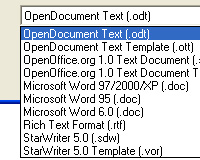 | Beginning with version 2.0 OpenOffice.org uses the open standard OASIS OpenDocument XML format as the default file format. The OASIS OpenDocument format is a vendor and implementation independent file format, and thus guarantees freedom and independence.
In addition to OpenOffice.org itself, the open source office suite KOffice as well as OpenOffice.org derivatives like the StarOffice software support the OASIS OpenDocument file format. The OASIS OpenDocument file format is also one of the file formats recommended by the European Commission. |
|
| New Multi-pane View |
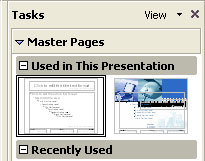 | The new Multi-pane view increases the productivity and usability of OpenOffice.org. The Multi-pane view provides all important tools and windows through one coherent, integrated, and simple user interface. Former Microsoft PowerPoint users should find OpenOffice.org 2.0 easy to use. |
|
| New CustomShapes (compatible with Microsoft AutoShapes) |
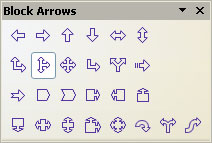 | OpenOffice.org now supports CustomShapes, which are very similar to Microsoft's AutoShapes. As a consequence, AutoShapes are imported and displayed correctly. CustomShapes are shapes that can change not only their size but also their appearance. |
|
| More Slide Transitions and Animation Effects |
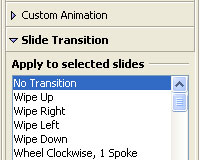 | OpenOffice.org now supports many more animation effects and slide transitions. Now users have more options to give their presentations a professional appearance. In addition, the extended support for effects improves compatibility with Microsoft PowerPoint. |
|
| Enhanced PDF Export |
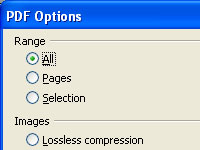 | OpenOffice.org 1.1 introduced the PDF export feature. Version 2.0 now extends the basic export feature. With the new version it is possible to define the compression levels of embedded images. In addition, the PDF support now correctly handles thumbnail images and hyperlinks. |
|
| New enhanced Database Frontend |
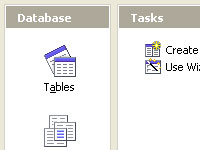 | OpenOffice.org always had database front end tools, but in past versions they were very hidden. OpenOffice.org 2.0 starts to handle databases like any other application, i.e. a new database can be created via the "File - New" menu. For novice users OpenOffice.org provides a new Table Wizard that allows creating database tables without any knowledge of databases or SQL. The new embedded HSQLDB database engine, based on Java technology, allows creating "database documents". These simple database files don't require a back end database server like MySQL or Adabas D. All information (table definitions, data, queries, forms, reports) is stored in one XML file. |
|
| Mail Merge Wizard |
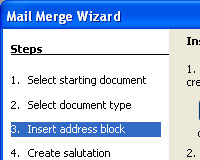 | The new Mail Merge Wizard makes it very easy to do mailings to hundreds of recipients. The wizard guides users step by step through the process. Various data sources can be used for the address information. |
|
| Enhanced Word Count Feature |
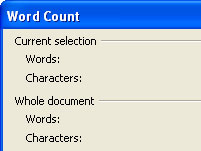 | In the past it was only possible to find document statistics under "File - Properties ...". It also was impossible to count the number of words in a selection. OpenOffice.org 2.0 eliminates this restriction. Now a new word count dialog can be found in the "Tools" menu. |
|
| Support for Nested Tables |
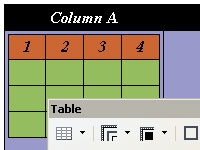 | With OpenOffice.org 2.0 it is now possible to create tables within tables (nested tables). This increases overall usability, and also improves compatibility with Microsoft Word. |
|
| Digital Signatures Support |
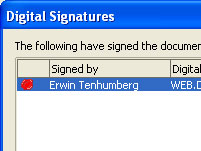 | Another new feature is the support of digital signatures. OpenOffice.org uses certificates stored in the regular repositories. |
|
| XForms Support |
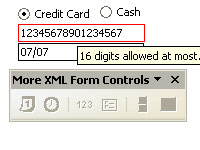 | OpenOffice.org 2.0 now allows creating forms based on the open W3C XForms standard. With XForms it is very easy to implement simple logic without any programming. |
|
| WordPerfect Filters |
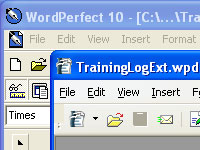 | OpenOffice.org 2.0 includes a WordPerfect filter developed by the open source community. Developers are invited to contribute to this project. |
|
| 65,536 Rows in Calc |
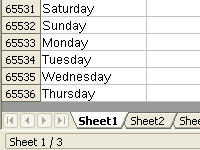 | OpenOffice.org 1.1 supported only 32,768 rows in spreadsheet documents, which caused Microsoft Excel interoperability issues. The new version now takes OpenOffice.org to the same level as Microsoft Excel. |
|
| Enhanced PivotTable Support |
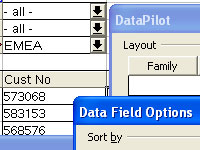 | With the DataPilot in OpenOffice.org 2.0 (similar to Microsoft Excel's PivotTable feature) it is now possible to create new groups, filter data based on values, show differences and percentages instead of absolute values, etc.
The new DataPilot features turn OpenOffice.org Calc into a very powerful tool for data analysis. |
|
| Native Installers |
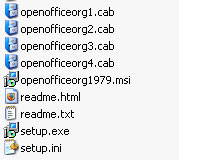 | OpenOffice.org 2.0 supports native installation mechanisms. For example, .MSI and .CAB files are provided on Microsoft Windows; RPM files are available for Linux.
For users with more sophisticated management requirements, Sun provides configuration management tools as part of the StarOffice software. StarOffice 8 will also introduce Macro migration tools. |
|
| Native Desktop Integration |
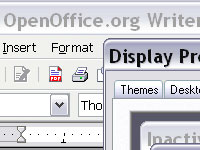 | The OpenOffice.org 2.0 applications integrate nicely into the desktop environment. Thus, OpenOffice.org looks and behaves like any other application on a given platform. On Windows XP it looks like a Windows application, and on Linux it uses the same UI widgets as GIMP or Evolution. |
|
| Floating Toolbars |
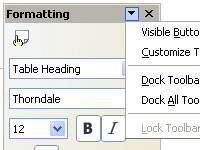 | Toolbars are much more flexible in OpenOffice.org 2.0. It is now very easy to move, attach, and detach toolbars, and to move them around and customize them. |
|
| DOWNLOAD |
| |

















Tidak ada komentar:
Posting Komentar
Aturan Berkomentar :
1. Koment yg bermutu, yg tidak menyinggung perasaan.
2. Berikan kritik yang bersifat membangun blog ini.
3. Jangan berikan komentar yang bersifat spam.
4. dan yg terakhir : U comment I follow..!! ok??